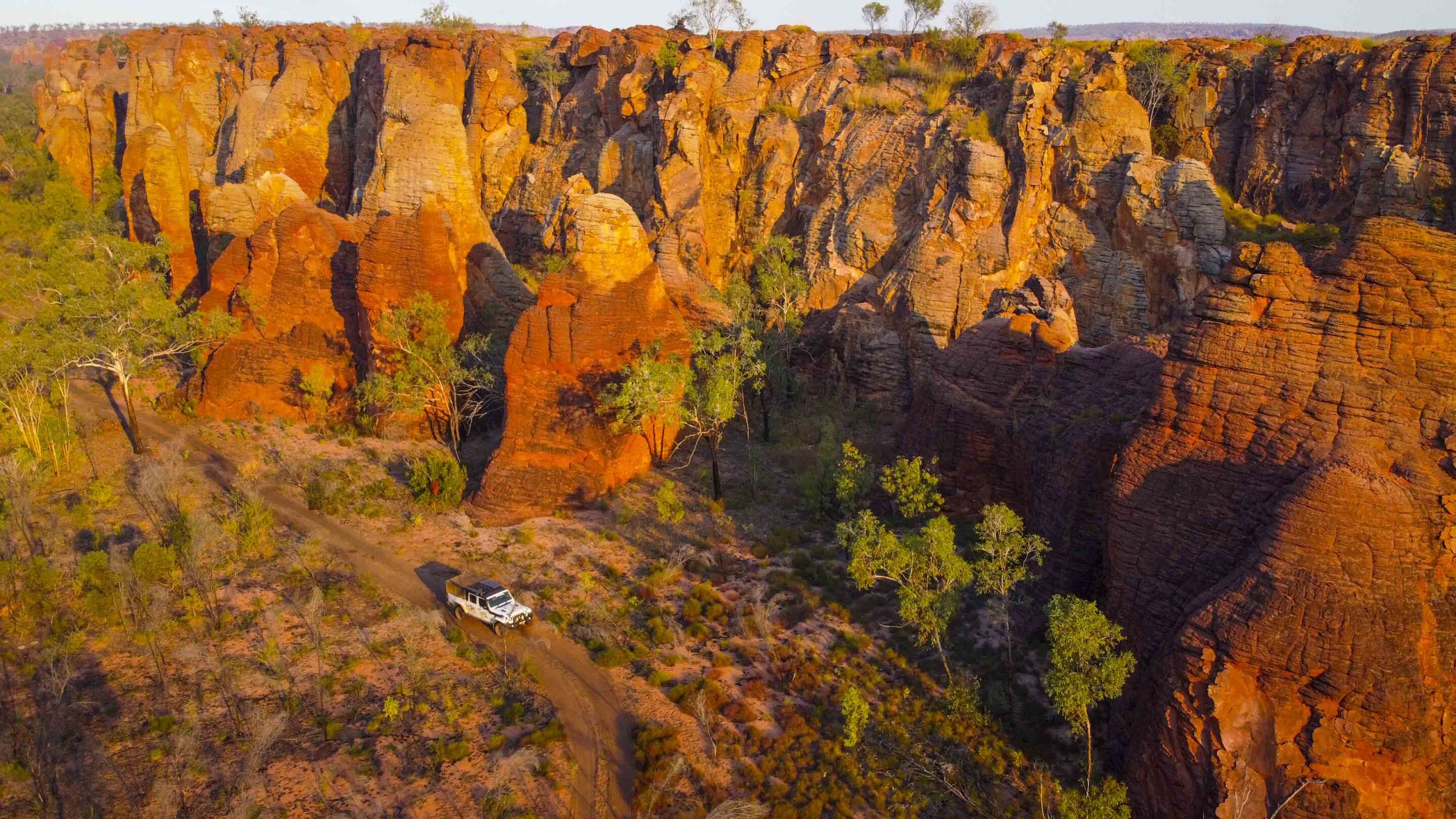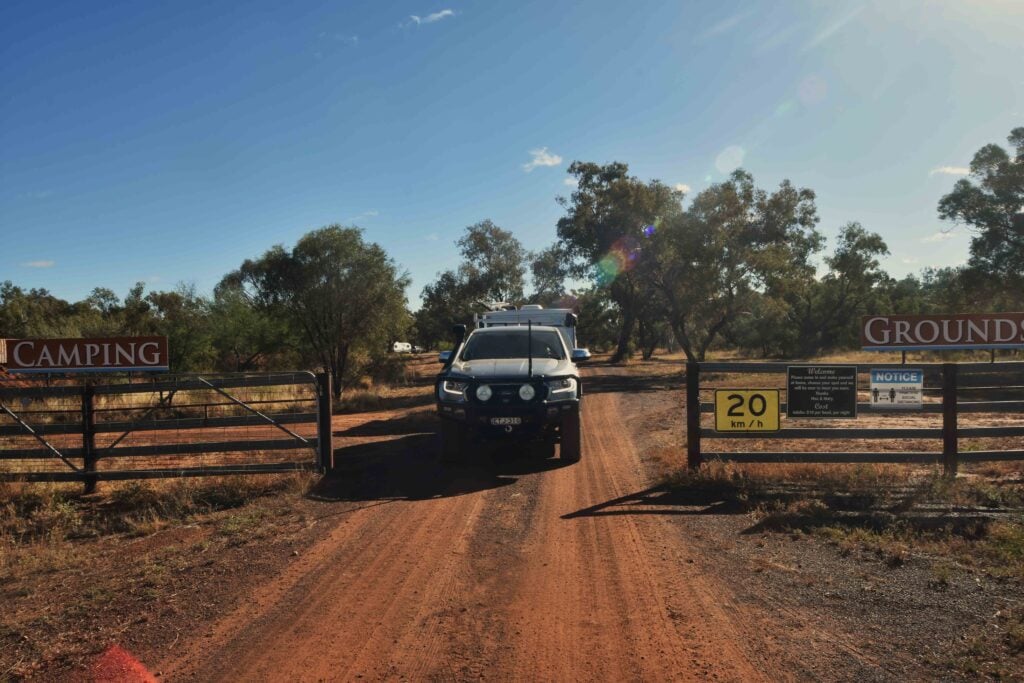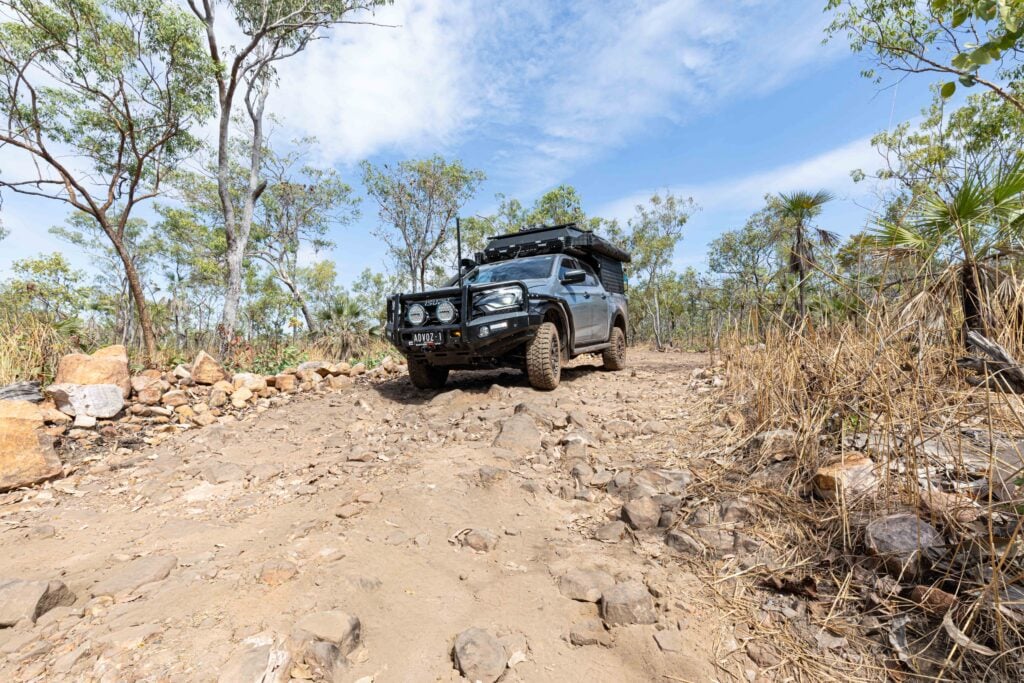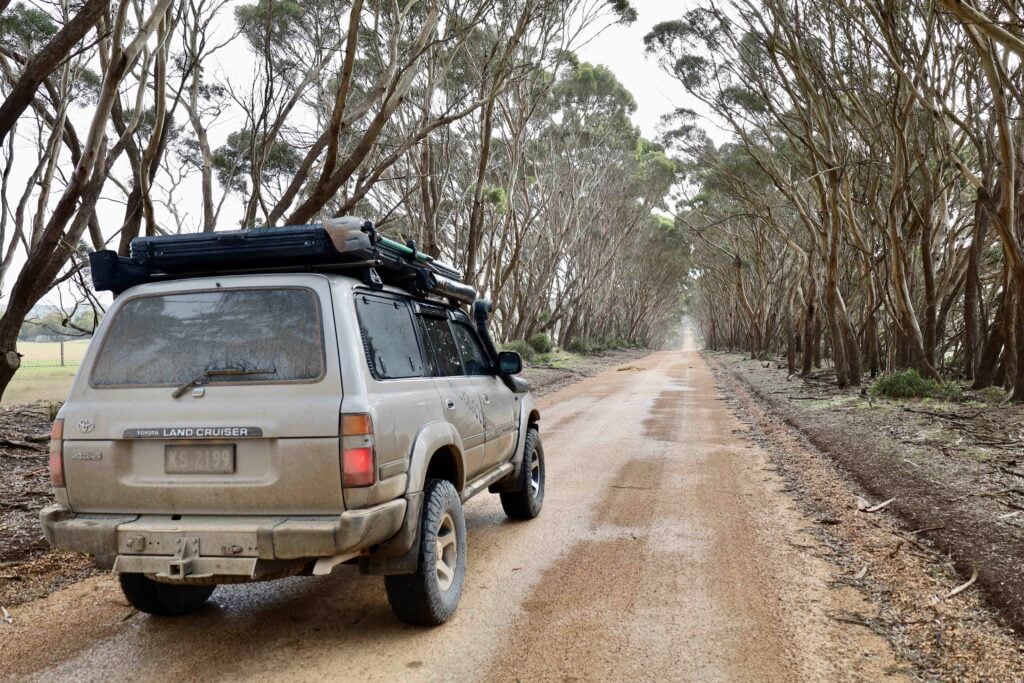My entire body tenses up as I walk towards the cool water. I feel bolts of lightning shoot up my spine as I wade knee deep into the crystal clear water and I sense something is very wrong.
Lush green ferns draping out over the water provide plenty of shade from the scorching midday sun, and enormous lily pads on the surface of the water complete the somehow familiar scene. Despite never having set foot here in my life, I have an overwhelming sense of déjà vu. My entire being is telling me I need to escape, and I need to go… right now!
This isolated riverbank in Northern Australia is eerily identical to the scene in Crocodile Dundee where Linda Kozlowski attempts to fill her water bottle before having a very up close and personal meeting with a monster saltwater croc.
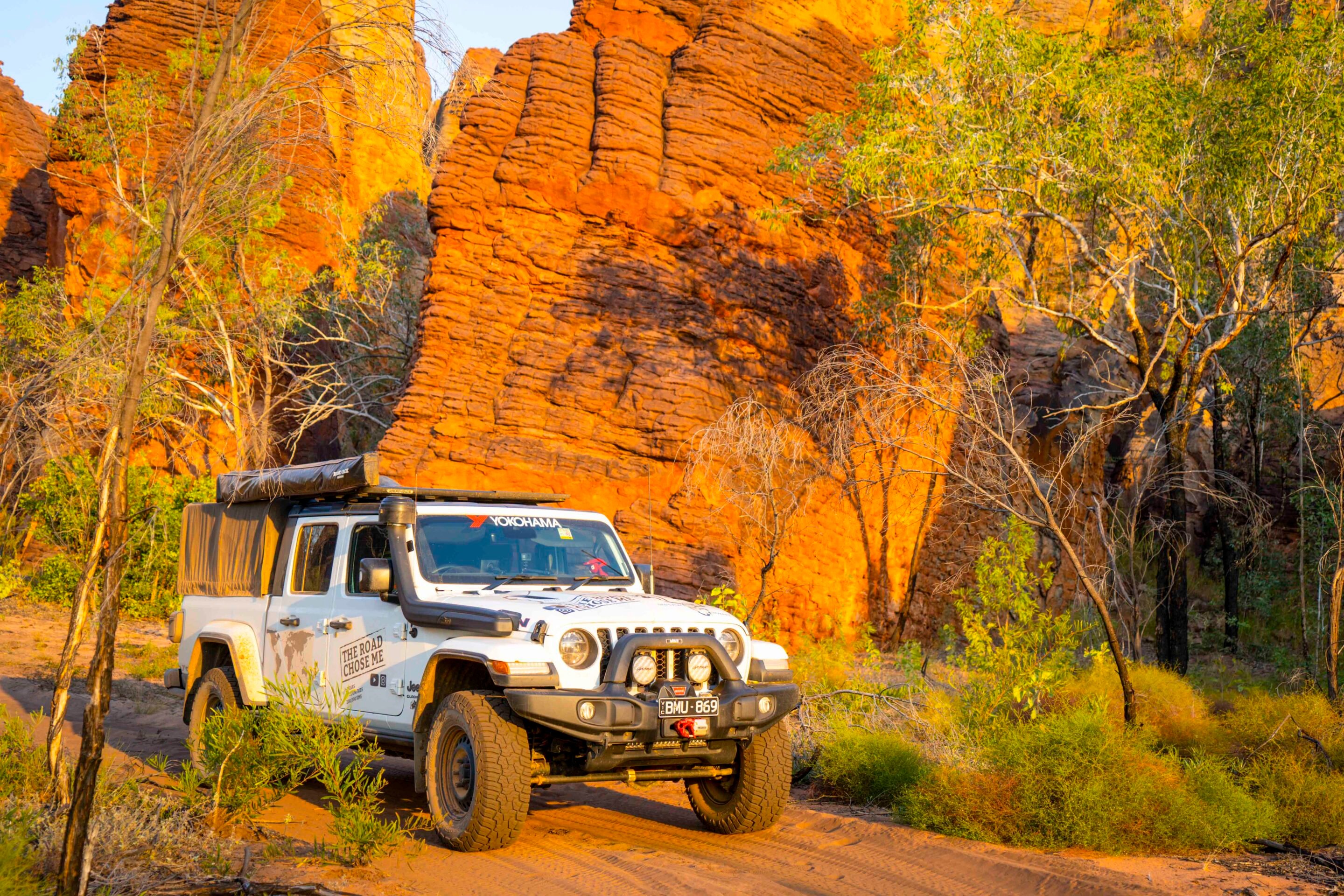
As I climb into the canoe and push offshore I am assured there’s no danger. To be perfectly clear, there are plenty of crocs in the water, but they’re just little freshies, and nothing to worry about. They don’t really attack people. Well, except the one at the waterfall we’re going to, but other than that, no worries mate.
We’re aiming to travel a few thousand kilometres from northern Queensland, across the top of the Northern Territory and into Western Australia, and apparently this kind of indifference to crocodiles is perfectly normal.
Tree kangaroos and natural hot springs in Far North Queensland
After the scorching heat and humidity of Cape York we thoroughly enjoy the fresh air provided by the elevation of the tablelands directly inland from Cairns. Night-time temperatures are genuinely cold, and hiking through the low mountains is a great way to warm up and enjoy the brisk morning air.
After a tip from a local we set out in search of the elusive tree kangaroo, which to my surprise is actually real and not just hoax like drop bears or so many other exaggerated Aussie critters. Exactly as the name implies, they look exactly like a small kangaroo, but prefer to live high in the treetops. Native to Papua New Guinea, Indonesia and this very tiny region of Northern Queensland, the highly endangered tree kangaroo is extremely difficult to spot.
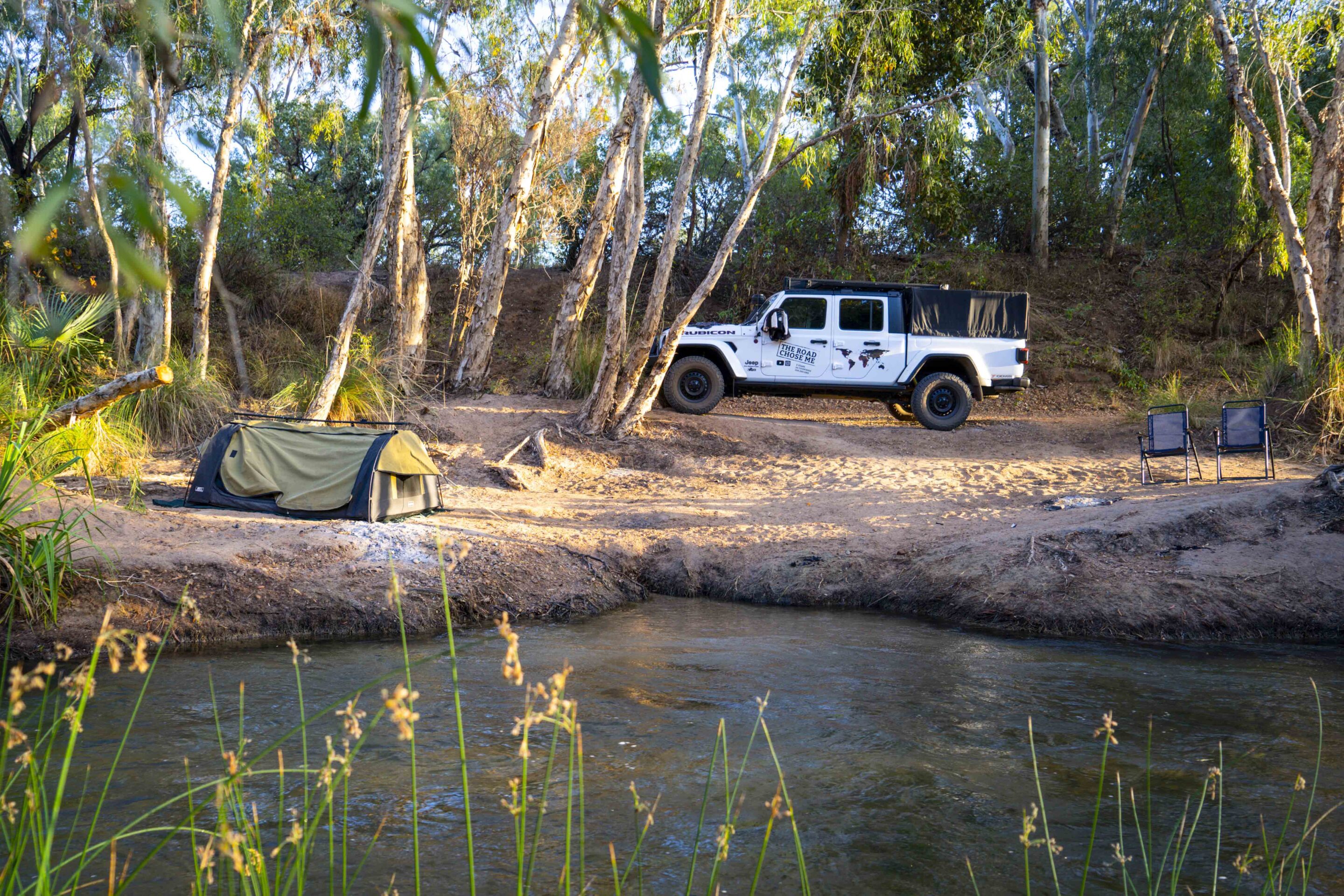
Soon we’re standing around with a few other people craning our necks, and I can’t believe it when we actually spot a small family of three high in the towering trees. Obviously aware of our presence they watch us carefully, and clearly have no intention of coming down for a closer meeting. It’s always fun to spot odd Australian wildlife, and I never imagined seeing a kangaroo that lives in a tree.
Later in the afternoon we roll into Innot Hot Springs, another honest-to-goodness natural hot spring. Plenty of scorching hot water bubbles to the surface in a small sandy river, which I much prefer to the modern concrete swimming pools nearby. Camping on site means we can enjoy a soak and stargazing long into the night, and again at sunrise. Once again, I’m shocked to learn Australia really does have plenty of natural hot water bubbling to the surface – you just have to go looking.
Paddling with crocs at Lawn Hill National Park, Queensland
Surrounded by thousands of kilometres of red dirt and dust, the paradise of Lawn Hill National Park is a spectacular red rock gorge complete with striking blue water and lush vegetation.
The best way to experience the gorge is in a canoe, so after overcoming my fear of winding up in the next Crocodile Dundee movie, we push off from shore for a few hours on the water. After a short and stunning paddle upstream we arrive at Indarri waterfall, almost the perfect place for a quick swim. The water and view are top notch, but sadly the locals are a little unfriendly.
We’ve been warned the freshwater crocodile that lives here is territorial, and recently a few people have been bitten. Given he is only a freshie it’s not like they lost limbs or anything, though it still feels very strange to swim in water with a crocodile that is known to have bitten people. Truth be told I think I was in the water for less than a second before making my hasty exit.
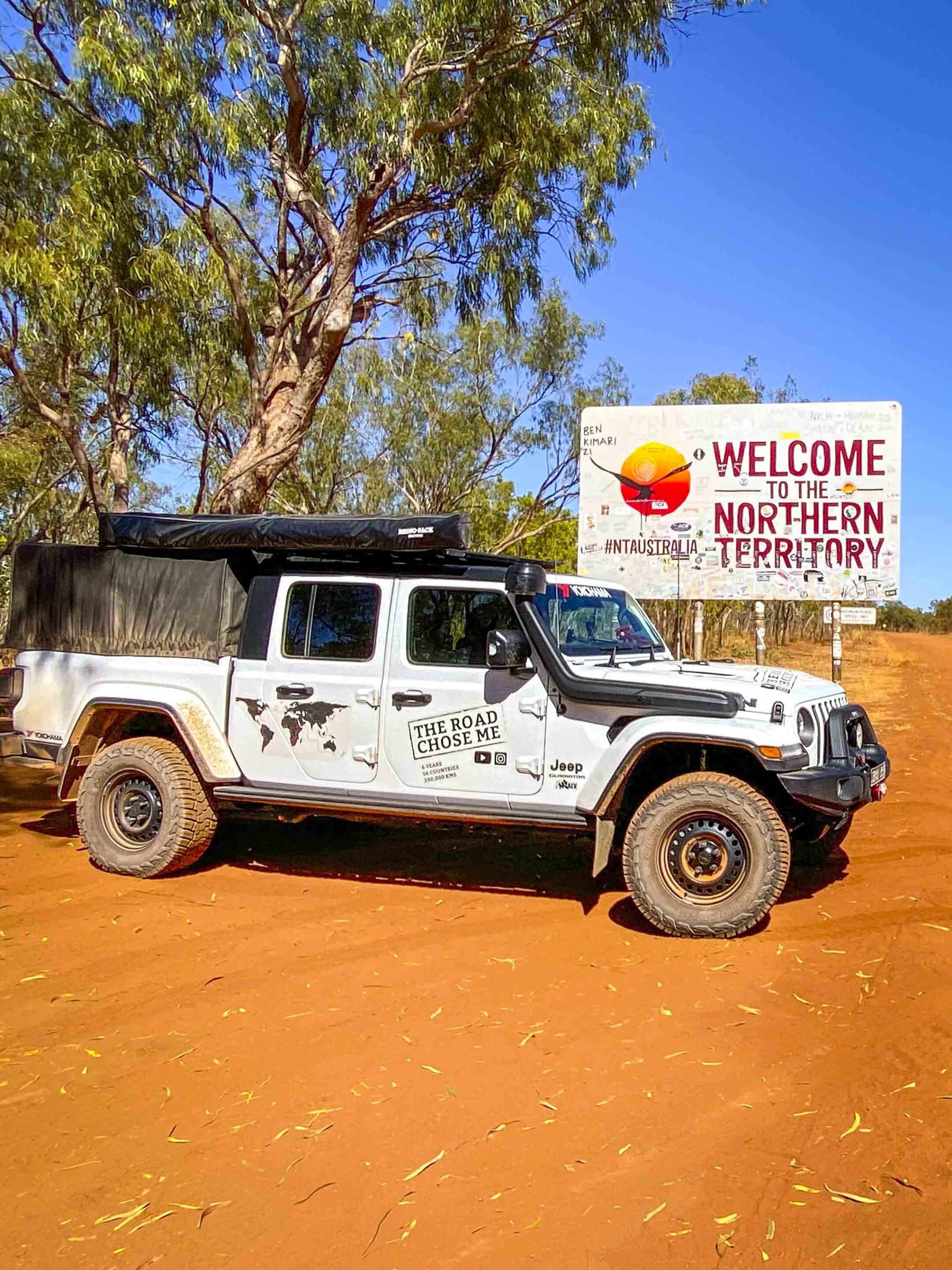
After dragging the canoe up and over the falls we continue further upstream where the canyon becomes overgrown, wild, and clearly not often visited. Eventually the canyon narrows down until we find ourselves in a small and fast flowing creek and we can go no further. Floating downstream on the return leg is extremely relaxing and gives us a great chance to really study the beautiful red rock canyon walls towering over us.
Not surprisingly Lawn Hill is a very popular spot, and when we discover the campground is full we decide to push on before making camp on the side of a random dusty track. With enormous distances the auxiliary tank in the Gladiator is essential, and transferring 70L with the push of a button sure is a nice way to go.
Boabs, red dirt roads and wild camping in the Kimberley
After thousands of kilometres of rough tracks, fine red dust eventually works its way inside the canvas cover on the Gladiator bed, and a fine layer coats everything from our clothes and bedding to our plates and bowls.
Washing off with a quick shower from the world’s simplest shower bag at sunset is always worthwhile, and many nights I fall deeply asleep the second my head hits the pillow, exhausted by long days, the scorching sun and never-ending corrugations. I’m not usually one to get caught up naming birds or plants, though I have to say the mighty baobabs of Africa are etched strongly in my mind. They have an enormous presence and majesty, and some of my favourite wild camps were surrounded by these giants.
While a few different types of baobabs are native across Africa, a small pocket of north west Australia is home to the boab, which looks virtually identical. With an enormous swollen trunk and stunted branches the silhouette of these giants is unmistakable. With soft pulpy fresh, they are actually a type of succulent that can live for thousands of years by storing water in their enormous trunk. Boabs of all shapes and sizes are a regular feature of the Kimberly landscape, and I have to constantly remind myself I am not back in Africa.

Exploring the remote Western Lost City in Limmen National Park
After a quick visit to a ranger station we get the code to a combination lock that grants access to the Western Lost City, an enormous rock formation well off the beaten path in remote Limmen National Park.
The access track is slow going, with sandy sections, dry rocky riverbeds and plenty of corrugations to rattle our teeth. I air down to 22psi all around not so much for added traction, but to dampen the vibrations and make travel easier on man and machine.
Formed roughly 1500 million years ago, these giant sandstone pillars were part of an ancient seabed that cracked and split as it was exposed. Millions of years of erosion from wind and water have carved the incredible pillars which defy belief. Each pillar is a stunning display of various colours caused by the mineral deposits in the sandstone and millions of years of sun exposure. We spend hours wandering around the entire site, discovering hidden aboriginal rock art, caves and beautiful trees and roots climbing all over the rock.
Putting the drone in the air I simply couldn’t believe my eyes – we had only been able to see a tiny fraction of the formation which is many kilometres in length and width. Leaving the stunning formation at sunset we see a herd of wild water buffalo on the track, another terrible Australian tale of an introduced species turned feral that now wreaks havoc on the native plants and animals.
Crossing croc country: Ivanhoe Crossing and a hidden Kimberley canyon
After a quick resupply in Kununurra just over the border into Western Australia we set out early in the morning to check out one of Australia’s most infamous river crossings.
At Ivanhoe the Ord River cascades over a kind of curved concrete dam wall, and concrete blocks mark the edges of the driving surface. At this time of year the water is no deeper than a foot, although it is flowing fast enough that I concentrate carefully. Putting a tyre wrong would result in a very bad day, especially given the river is teeming with monster salties waiting below for any wayward fish or four-wheel driver.
With low mountains in the background and boabs on the water’s edge, the scene is spectacular and inviting, and I have to constantly remind myself this is not the place for a swim. I’m also not sure about the group of locals standing on the bank fishing. The crocs are a constant concern, they say, but the fishing makes up for it. I think it helps to be nuts.
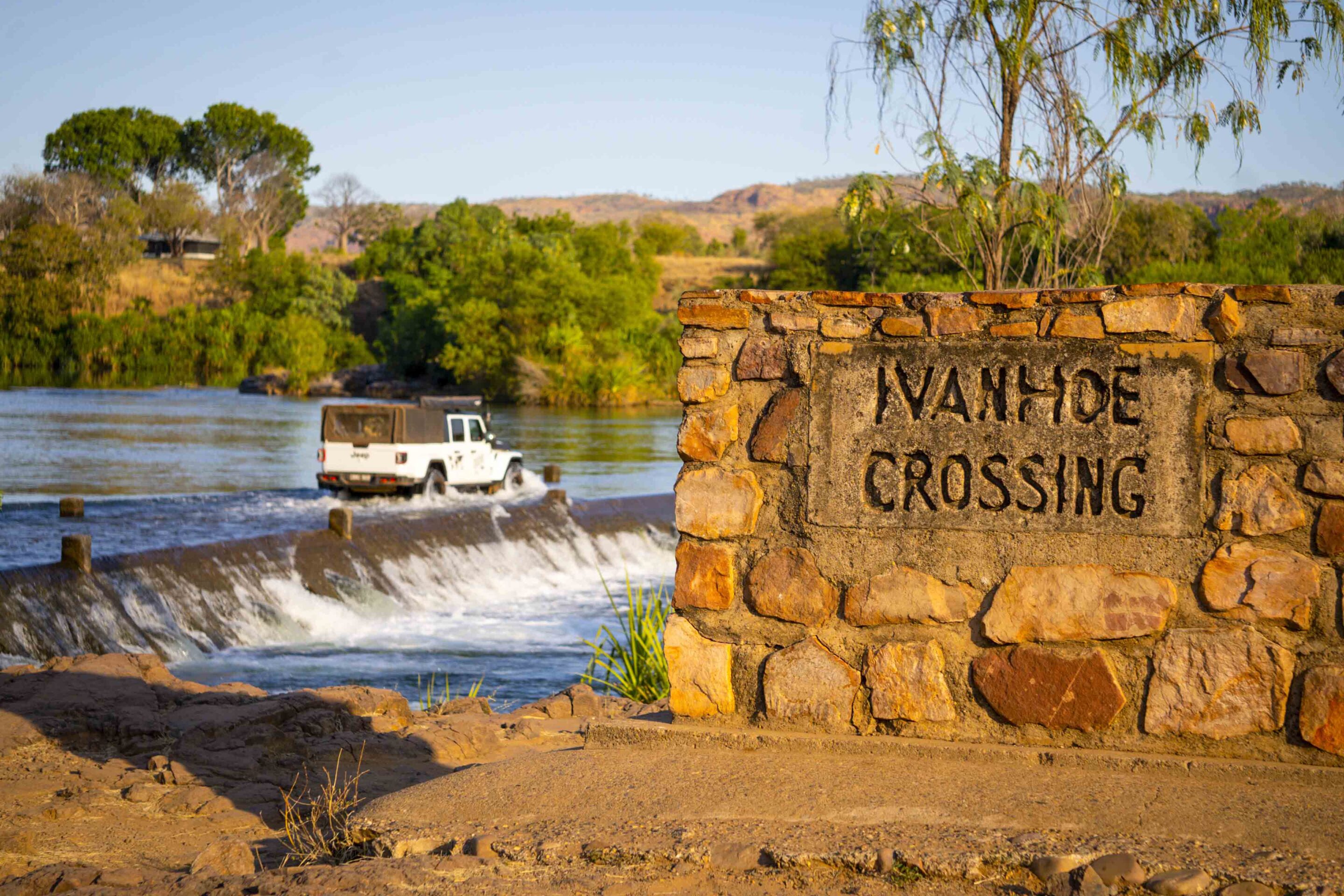
After promising we won’t give up the location, a local tells us about a nearly ‘secret canyon’ full of waterfalls and swimming holes, and so we immediately set out to explore. The access track has a few river crossings that lap at the bonnet, and a couple of loose rock scrambles that require low range 4×4.
The canyon and surrounds are everything we were promised, and we spend an entire day swimming and climbing all over the waterfalls in the hot sun. The elevation change and rocky waterfalls mean there should be no crocs to worry about, and I’m very happy to not see one for the entire day.
The mighty Top End: 5000km across northern Australia’s wild frontier
We spend a week resupplying and doing odd maintenance jobs in and around steamy Darwin, a city that feels more like South East Asia than Australia, which makes perfect sense given we’re only a stone’s throw from a dozen other countries.
Reflecting on our time across the top of Australia, we have explored well over 5000km on remote and dusty corrugated roads to see stunning natural wonders, plenty of beautiful wildlife and more crocs than I care to count – both freshies and salties.
Though we are months from the peak of summer, the heat and humidity have been intense, and the red earth has taken on a special hue that makes sunsets brighter than ever before. All of this combined with tropical fruit, natural hot springs, waterfalls and monster lizards makes me feel like we’ve been exploring some exotic land far from where I grew up in rural Victoria.
While the distances are huge, the rewards are equally as big across the top of this enormous continent.
We recommend
-
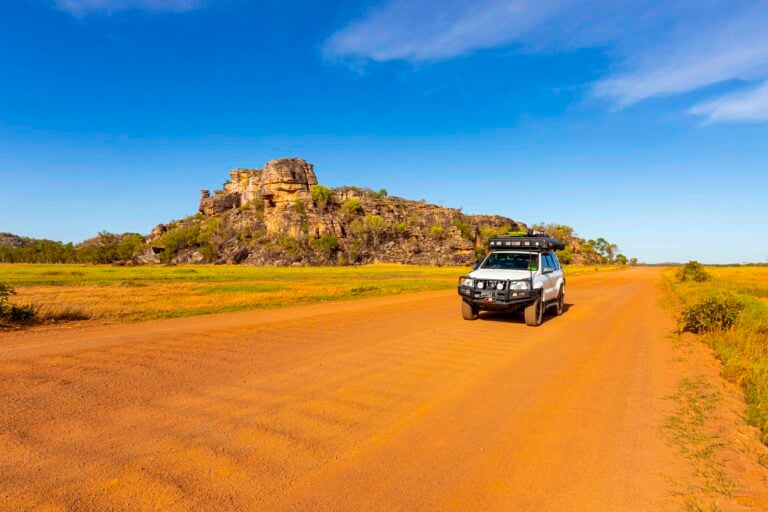 Explore NT
Explore NTVisiting Garig Gunak Barlu National Park (Cobourg Peninsula) – Everything you need to know
Perched at the northernmost tip of the NT mainland, this park rewards intrepid travellers with untouched beaches and dramatic landscapes
-
 Explore QLD
Explore QLDMoreton Island or K'gari (Fraser Island): Which one should you visit first?
Both are breath-taking, but which island paradise is right for you?
-
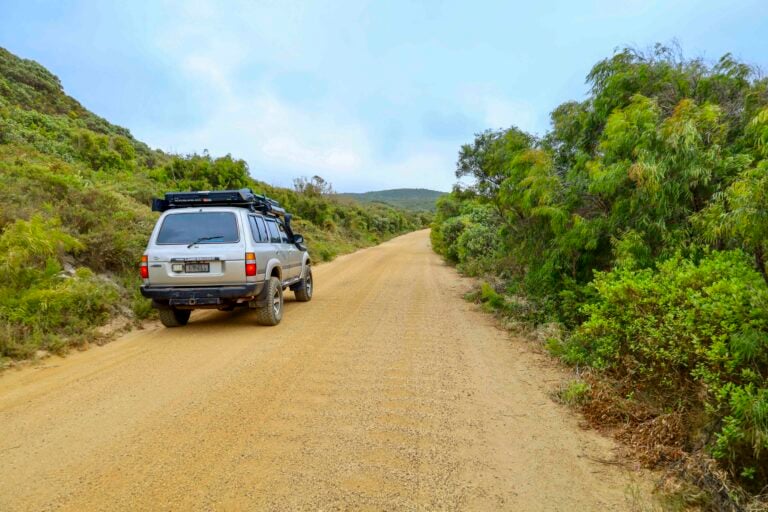 Explore WA
Explore WAWhy Albany in WA should be your next coastal road trip
WA’s oldest settlement is a perfect blend of rich history, rugged coastline and rolling forest

